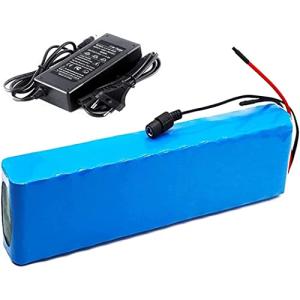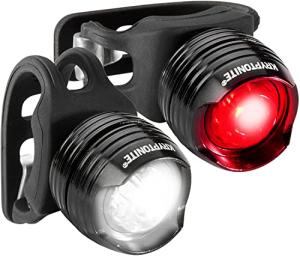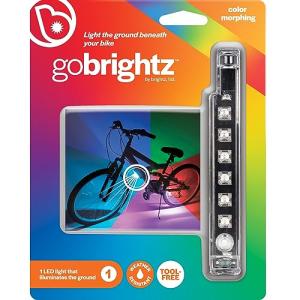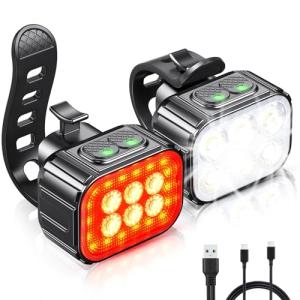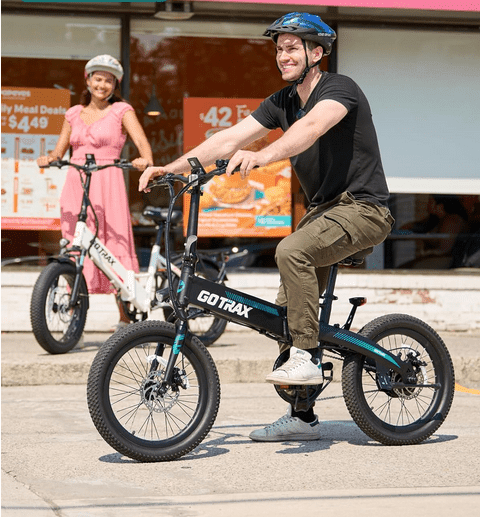Troubleshooting Common Electric Bike Issues
Are you experiencing technical hiccups with your electric bike? Don't worry, you're not alone. Electric bikes have become increasingly popular, offering convenience and a greener alternative for commuting or leisure rides. However, like any other mode of transportation, they can face issues from time to time.
But fret not! In this article, we'll guide you through troubleshooting common electric bike problems, providing easy and effective solutions. Whether it's a faulty battery, motor, or even an electrical glitch, we've got you covered.
Our comprehensive guide will equip you with the knowledge to identify and fix these issues swiftly, saving you time and money. No confusing technical jargon—just simple, step-by-step instructions that anyone can follow.
So, if you're tired of waiting for a technician or want to take matters into your own hands, strap in and join us as we dive into the world of troubleshooting electric bike problems. Get ready to rev up your bike and hit the road again in no time!
Common electric bike issues
Electric bikes have revolutionized the way we commute and explore our surroundings, offering a convenient and eco-friendly mode of transportation. However, like any other technological marvel, they can occasionally encounter various issues that need to be addressed. Understanding the common problems faced by electric bike owners is the first step in troubleshooting and maintaining your beloved ride.
One of the most prevalent issues with electric bikes is battery-related problems. The battery is the heart of an e-bike, powering the motor and providing the necessary energy for your rides. Factors such as battery capacity, charging, and lifespan can significantly impact the performance and reliability of your electric bike. Additionally, electrical wiring and connections can also be sources of trouble, leading to power fluctuations, motor malfunctions, and even safety concerns.
Another common problem is motor-related issues, where the bike's propulsion system may not function as expected. This can manifest in various ways, such as reduced power, sudden shutdowns, or even complete motor failure. Braking systems are also crucial for the safe operation of electric bikes, and any problems with the brakes can pose a serious threat to the rider's well-being.
Mechanical issues, such as tire wear, chain problems, and other component failures, can also plague electric bikes. These problems may not be unique to e-bikes, but they can be exacerbated by the added weight and stress placed on the bike's components due to the electric motor and battery system.
Understanding these common electric bike issues is the first step towards troubleshooting and resolving them effectively. By addressing these problems promptly and with the right solutions, you can ensure the continued smooth and safe operation of your electric bike, allowing you to enjoy the benefits of this revolutionary mode of transportation.
Troubleshooting electric bike battery problems
The battery is undoubtedly the most critical component of an electric bike, and any issues with it can significantly impact the performance and range of your ride. Fortunately, troubleshooting electric bike battery problems is a relatively straightforward process, and with the right knowledge, you can often resolve these issues yourself.
One of the most common battery-related problems is a shortened battery life or reduced range. This can be caused by a variety of factors, such as overcharging, exposure to extreme temperatures, or simply the natural degradation of the battery over time. To address this issue, start by checking the battery's charge level and ensuring that you're following the manufacturer's recommended charging guidelines. Avoid leaving your battery fully charged for extended periods, as this can accelerate the degradation process.
If the battery is not holding a charge as well as it used to, consider replacing the battery or having it professionally serviced. In some cases, the battery may simply be reaching the end of its lifespan and may need to be replaced. When purchasing a replacement battery, make sure to choose one that is compatible with your electric bike model and that meets the manufacturer's specifications.
Another common battery problem is a sudden loss of power or a complete battery failure. This can be caused by a variety of factors, including a loose connection, a faulty battery management system, or even a damaged battery cell. Start by checking the battery connections and ensuring that they are tight and secure. If the connections appear to be in good condition, you may need to have the battery tested by a professional to determine the root cause of the problem.
In some cases, the battery may simply need to be recharged. If the battery is completely drained, it may take several hours of charging before it regains its full capacity. Be patient and follow the manufacturer's instructions for charging the battery, as overcharging or using an incompatible charger can further damage the battery.
By understanding and addressing these common electric bike battery problems, you can keep your bike running smoothly and extend the life of your battery. Remember to always prioritize safety when working with the battery, and don't hesitate to seek professional assistance if you're unsure about the cause of the problem or how to resolve it.
Fixing motor and power issues
The electric motor is the heart of an electric bike, responsible for providing the power and propulsion that makes your ride effortless. However, like any other component, the motor can occasionally encounter issues that can impact the performance and functionality of your electric bike. Fortunately, with the right troubleshooting techniques, you can often resolve these problems and get back on the road in no time.
One of the most common motor-related issues is a sudden loss of power or a reduction in the bike's top speed. This can be caused by a variety of factors, such as a faulty motor, a problem with the motor controller, or even a battery issue. Start by checking the battery and ensuring that it is fully charged and properly connected. If the battery appears to be in good condition, the issue may lie with the motor or the motor controller.
If the motor is not providing the expected power, it may be due to a mechanical problem, such as a worn or damaged gear system, a seized bearing, or a problem with the motor windings. In some cases, the motor may simply be overheating, which can cause it to temporarily shut down or reduce its power output. To address this issue, ensure that the motor is properly ventilated and that the bike is not being operated in excessively hot conditions.
Another common motor-related problem is a sudden shutdown or complete motor failure. This can be caused by a variety of factors, including a faulty motor controller, a problem with the electrical wiring, or even a software issue. Start by checking the motor controller and ensuring that it is functioning properly. If the controller appears to be in good condition, the issue may lie with the motor itself or the electrical connections.
In some cases, the motor may need to be serviced or replaced. This is best left to a professional, as the process can be complex and may require specialized tools and knowledge. However, if you're comfortable working on your electric bike, you may be able to perform some basic motor maintenance, such as cleaning and lubricating the gears or replacing worn bearings.
By understanding and addressing these common motor and power issues, you can keep your electric bike running at its best and enjoy a smooth, reliable ride. Remember to always prioritize safety when working on your bike, and don't hesitate to seek professional assistance if you're unsure about the cause of the problem or how to resolve it.
Dealing with electrical wiring problems
The electrical system of an electric bike is a complex and crucial component that plays a vital role in the overall functionality and performance of your ride. From the battery to the motor, the electrical wiring and connections are responsible for transmitting power and ensuring seamless operation. However, like any electrical system, these components can occasionally encounter issues that can impact the bike's performance and even pose safety concerns.
One of the most common electrical wiring problems is a loose or faulty connection. Over time, the constant vibrations and movement of the bike can cause the wires and connectors to become loose or even damaged. This can lead to power fluctuations, sudden shutdowns, or even complete electrical failure. To address this issue, start by inspecting all the electrical connections on your bike, ensuring that they are tight and secure. If you find any loose or damaged connections, carefully tighten them or replace the affected components.
Another electrical wiring problem that can plague electric bikes is short circuits or ground faults. These issues can be caused by a variety of factors, such as damaged or frayed wires, water intrusion, or even a problem with the bike's electrical system. If you suspect a short circuit or ground fault, it's essential to address the issue immediately, as it can pose a serious fire hazard and potentially damage other electrical components. Start by visually inspecting the wiring for any signs of damage or wear, and use a multimeter to test for continuity and proper grounding.
In some cases, the electrical wiring problem may be more complex, such as a problem with the bike's electrical control system or the integration of various electrical components. These issues may require the expertise of a professional technician, as they may involve troubleshooting software or firmware issues or even the replacement of specialized electrical components.
When dealing with electrical wiring problems, it's crucial to exercise caution and prioritize safety. Electrical systems can be dangerous, and improper handling or repair can lead to further damage or even personal injury. If you're not comfortable working on the electrical components of your electric bike, it's best to seek the assistance of a qualified technician who can diagnose and resolve the issue safely and effectively.
By understanding and addressing these common electrical wiring problems, you can keep your electric bike running smoothly and ensure the safety of both you and your ride. Remember to always follow the manufacturer's instructions, use the appropriate tools and equipment, and don't hesitate to seek professional help when needed.
Solving brake and tire issues
Brakes and tires are two critical components of any bicycle, and this importance is amplified in the case of electric bikes. Ensuring the proper functioning of these systems is essential for the safety and overall performance of your electric bike. Fortunately, many common brake and tire issues can be easily identified and resolved with the right troubleshooting techniques.
One of the most common brake-related problems on electric bikes is a lack of braking power or responsiveness. This can be caused by a variety of factors, such as worn brake pads, misaligned brake calipers, or even a problem with the brake fluid (in the case of hydraulic brakes). Start by inspecting the brake pads and ensuring that they have sufficient material left. If the pads are worn, replace them with new ones that are compatible with your bike's braking system.
If the brake pads are in good condition, the issue may lie with the brake calipers or the brake levers. Check to ensure that the calipers are properly aligned and that the brake cables are not binding or fraying. You may also need to adjust the brake lever tension to ensure optimal braking performance. In some cases, the brake fluid may need to be flushed or replaced, especially if the bike has been in storage for an extended period.
Tire-related issues can also be a common problem for electric bike owners. Factors such as tire wear, punctures, and even issues with the bike's suspension can all contribute to problems with the tires. One of the most common tire issues is a loss of traction or a feeling of instability while riding. This can be caused by worn or underinflated tires, or even a problem with the bike's suspension.
To address tire-related issues, start by inspecting the tires for any signs of wear or damage, such as cracks, bulges, or punctures. If the tires are worn, replace them with new ones that are compatible with your electric bike's specifications. Additionally, ensure that the tires are properly inflated to the recommended pressure, as underinflated tires can significantly impact the bike's handling and stability.
If the issue is related to the bike's suspension, you may need to have it serviced or adjusted by a professional. Improper suspension setup can lead to a variety of problems, including reduced traction and an unstable ride. By addressing these brake and tire issues promptly, you can ensure the continued safe and reliable operation of your electric bike.

Handling minor mechanical problems
While electric bikes are designed to be low-maintenance, they still require regular care and attention to ensure optimal performance and longevity. In addition to the electrical and power-related issues we've already discussed, electric bikes can also encounter minor mechanical problems that, if left unaddressed, can lead to more serious problems down the road.
One common mechanical issue that electric bike owners may face is chain problems. The added weight and torque of the electric motor can put a lot of strain on the bike's chain, leading to faster wear and potential breakage. To address this, regularly inspect the chain for signs of wear, such as stretched or damaged links, and keep it properly lubricated. If the chain is worn beyond repair, replace it with a new one that is compatible with your bike's drivetrain.
Another mechanical issue that can arise is problems with the bike's gears or derailleur. The shifting mechanism on an electric bike may need more frequent adjustments due to the added stress of the electric motor. If you notice that your gears are skipping, shifting poorly, or the derailleur is not aligning properly, it's time to make some adjustments. This may involve tweaking the derailleur limit screws, adjusting the cable tension, or even replacing worn components.
Wheel and bearing issues can also be a concern for electric bike owners. The extra weight of the bike and the frequent stops and starts can put a lot of stress on the wheels and bearings. Keep an eye out for any wobbling, grinding, or unusual noises coming from the wheels, and address any issues promptly. This may involve adjusting the wheel bearings, truing the wheels, or even replacing worn components.
Finally, don't forget about the importance of maintaining the bike's suspension (if equipped). The added weight and power of an electric bike can put a lot of strain on the suspension system, leading to issues like poor damping, leaks, or even complete failure. Regularly inspect the suspension components, and consider having them serviced by a professional if you notice any problems.
By addressing these minor mechanical issues in a timely manner, you can prevent them from escalating into more serious and costly problems. Remember to always follow the manufacturer's recommendations for maintenance and use the appropriate tools and techniques when working on your electric bike. And if you're ever unsure about how to handle a particular mechanical issue, don't hesitate to seek the assistance of a qualified technician.
Preventive maintenance for electric bikes
Maintaining the overall health and performance of your electric bike is crucial, not only for ensuring a smooth and enjoyable riding experience but also for prolonging the lifespan of your investment. Preventive maintenance is the key to keeping your e-bike in top condition, and it's a habit that every responsible electric bike owner should adopt.
One of the most important aspects of preventive maintenance is regular cleaning and inspection. Regularly wiping down your electric bike, paying special attention to the drivetrain, brakes, and electrical components, can help identify potential issues before they become more serious problems. This also helps to prevent the buildup of dirt, grime, and corrosion, which can negatively impact the performance and longevity of your bike.
Proper battery care is another critical component of preventive maintenance for electric bikes. As we've discussed, the battery is the heart of your e-bike, and it requires special attention to ensure it maintains its optimal performance and lifespan. This includes following the manufacturer's recommended charging guidelines, avoiding overcharging, and storing the battery properly when not in use. Regularly checking the battery's charge level and capacity can also help you identify any potential issues before they become more serious.
Regular lubrication and adjustments are also essential for keeping your electric bike in top shape. The chain, gears, and other moving parts require periodic lubrication to reduce wear and ensure smooth operation. Adjusting the brakes, derailleur, and other components as needed can also help to prevent more significant problems down the line. Consult your owner's manual or seek the advice of a professional to ensure you're performing these maintenance tasks correctly.
Finally, it's important to stay on top of any necessary replacements or upgrades. Components like tires, brake pads, and even the battery may need to be replaced over time as they wear down. Keeping an eye on the condition of these parts and replacing them as needed can help to ensure the continued safe and reliable operation of your electric bike.
By adopting a proactive approach to preventive maintenance, you can not only extend the lifespan of your electric bike but also enjoy a smoother, more reliable, and more enjoyable riding experience. Remember, a well-maintained electric bike is a happy electric bike, and it's up to you to keep it that way.
Resources for further assistance
While this comprehensive guide has provided you with the knowledge and tools to troubleshoot and resolve many common electric bike issues, there may be times when you need additional assistance or resources to help you get your bike back on the road. Fortunately, there are a variety of resources available to electric bike owners that can provide the support and guidance you need.
One of the first places to turn to for further assistance is the manufacturer of your electric bike. Many bike manufacturers offer comprehensive customer support, including online resources, troubleshooting guides, and even direct assistance from their technical support teams. If you're experiencing a specific issue with your electric bike, be sure to check the manufacturer's website or reach out to their customer service department for guidance.
In addition to the manufacturer's resources, there is also a wealth of online communities and forums dedicated to electric bike enthusiasts. These platforms are often filled with knowledgeable and experienced riders who are more than willing to share their expertise and offer troubleshooting advice. Whether you're looking for step-by-step instructions, recommendations for replacement parts, or just general advice, these online communities can be an invaluable resource.
If you prefer hands-on assistance, consider seeking out a local electric bike repair shop or technician. These professionals have the specialized knowledge and tools to diagnose and repair a wide range of electric bike issues, from battery problems to motor failures. They can also provide valuable maintenance tips and advice to help you keep your bike in top shape. When choosing a repair shop, be sure to do your research and find one with a proven track record of quality service and customer satisfaction.
Finally, don't forget about the wealth of instructional videos and tutorials available online. Platforms like YouTube and specialized electric bike blogs often feature detailed, step-by-step guides on how to troubleshoot and repair common electric bike problems. These resources can be especially helpful if you're a visual learner or prefer to tackle repairs yourself.
By leveraging these various resources, you can ensure that you have the support and guidance you need to keep your electric bike running smoothly and safely. Remember, don't hesitate to seek a professional
BVRILA 37-Piece Bicycle Repair Tool Kit
Everything you need to fix and maintain your bike effortlessly
Product information
$78.76
Product Review Score
4.55 out of 5 stars
216 reviewsProduct links
36V 7800mAh Lithium-Ion E-Bike Battery Pack
Power your rides with this long-lasting battery that ensures you stay on the road longer and enjoy every adventure
Product information
$178.06
Product Review Score
4.15 out of 5 stars
198 reviewsProduct links
DISCLAIMER
This document is provided for general information purposes only and should not be relied upon as providing legal advice, technical, or specific operational guidance to the reader, whether as to the practices described in the document or the applicable legal requirements and regulations. justelectricbikes.com expressly disclaims any responsibility for liability arising from or related to the use or misuse of any information in this document.




